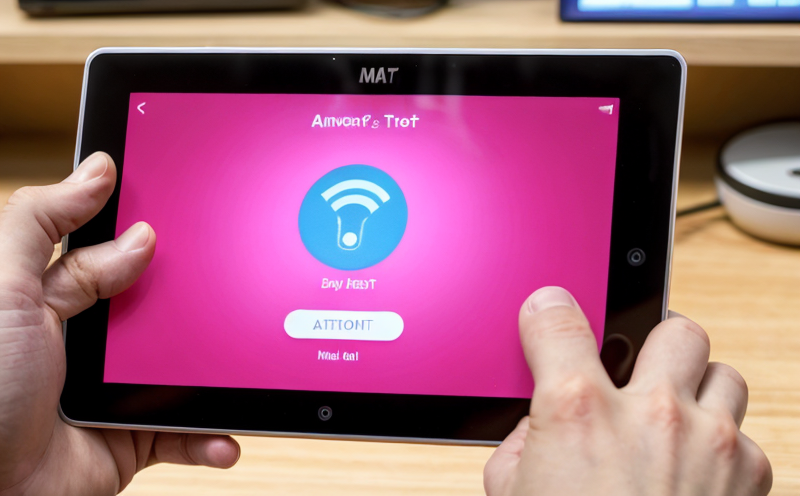User Interface Functionality Testing of IoT Devices
Consumer products and product safety testing have become increasingly complex in today's interconnected world. The integration of smart and connected consumer devices, including Internet of Things (IoT) technology, has raised the bar for quality assurance and user experience. One critical aspect of ensuring the reliability and functionality of these devices is User Interface Functionality Testing.
User interfaces are the front end of IoT devices that interact directly with users. They can range from touch screens to voice commands, depending on the device's design and intended use. The user interface must be intuitive, responsive, and secure, as any flaw could lead to poor user experience or even safety hazards.
Our testing service focuses specifically on evaluating the functional aspects of these interfaces. This includes assessing the responsiveness of buttons, touchscreens, voice commands, and other interactive elements. Additionally, we examine how the interface behaves under various conditions, such as different lighting levels, temperature changes, or network instability. Our rigorous testing ensures that users can interact with the device seamlessly.
The process begins by thoroughly understanding the product's specifications and user requirements. This allows us to tailor our tests to meet specific needs, ensuring comprehensive coverage of all potential issues. Once the test plan is established, we use state-of-the-art equipment and software tools to simulate real-world conditions. These simulations help identify any areas where the interface may falter or fail.
Our testing methodology covers several key aspects:
- Usability: Ensuring that the user interface is easy to navigate and understand.
- Responsiveness: Checking how quickly the system responds to user inputs.
- Error Handling: Evaluating the device's ability to manage and recover from errors gracefully.
- Security: Verifying that sensitive information is protected during interactions with the interface.
By conducting these tests, we provide our clients with detailed reports highlighting both strengths and weaknesses of their IoT devices. These insights are invaluable for improving product design and enhancing overall user satisfaction. Our expertise in this field ensures that you receive accurate, reliable data to guide your decision-making processes.
Benefits
- Enhances user experience by ensuring smooth and intuitive interactions with the device.
- Identifies potential issues early in the development cycle, reducing costly rework later on.
- Improves product reliability through thorough evaluation of all interactive elements.
- Supports compliance with relevant international standards like ISO 9241 and IEEE 1788.
- Aids in securing sensitive information by testing the robustness of security protocols integrated into the interface.
Quality and Reliability Assurance
To ensure that our tests meet high standards, we adhere to strict quality control measures throughout each phase of testing. We employ advanced testing methodologies and utilize cutting-edge technology tailored specifically for IoT devices.
- We follow ISO 9241-210 guidelines for usability engineering to guarantee a consistent and user-friendly experience across all platforms.
- Our tests are conducted under various environmental conditions, mimicking real-world scenarios to ensure the interface performs consistently.
- We employ sophisticated algorithms and machine learning techniques to detect anomalies in performance patterns that might indicate future failures.
Use Cases and Application Examples
User Interface Functionality Testing is crucial for ensuring the seamless operation of IoT devices across various sectors. Here are some examples:
- Home Appliances: Smart refrigerators, washing machines, and ovens rely heavily on user interfaces to control their functions. Ensuring these interfaces work correctly can prevent costly malfunctions.
- A case in point is the integration of voice command features into home appliances. Testing ensures that commands are accurately processed and executed without delays or errors.
- In healthcare settings, the interface must be responsive to user inputs and capable of handling sensitive patient information safely. Our testing ensures compliance with HIPAA regulations while enhancing usability.
- We test these interfaces to ensure they provide clear feedback and are easy to use even during critical situations. This helps maintain driver focus on the road while enhancing safety.





